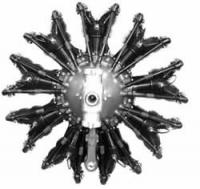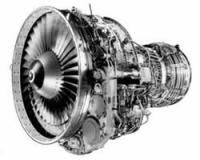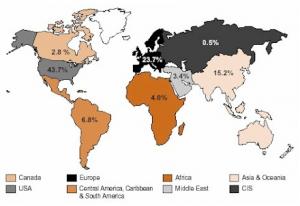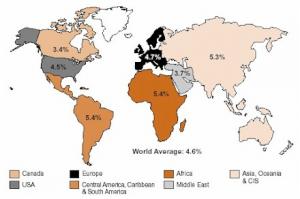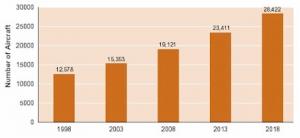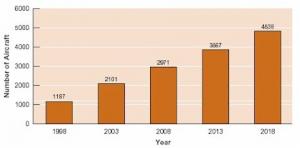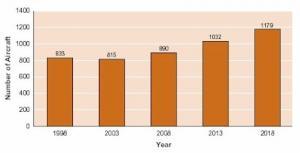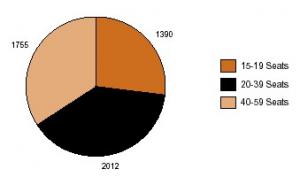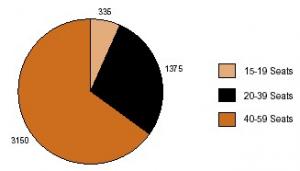- Introduction
- Civil aviation aircraft categories
- Aircraft engines in civil aviation
- Current aircraft fleet distribution and projected growth patterns
- Aviation: a go industry
- Aviation: a global industry
- Aircraft certification standards
- Conclusion
Introduction
Risk posed to aircraft by wildlife-strikes is measured after determining:
- the exposure, probability and severity of a wildlife strike,
- the aircraft and engine type, and
- the aircraft operating environment (See Chapter 2 and 6).
Exposure and probability relate to the environment in which a particular type of aircraft operates. Since most wildlife strikes occur during takeoff and landing phases (see Chapter 7), aircraft that frequently engage in these activities are at higher risks. Operations in and out of airports where there is little or no wildlife-management activity—such as small community airports and major airports in developing nations—are also at higher risks of incurring bird and mammal strikes.
Certification standards for particular engine and airframe components are important when determining the potential severity of damage. These standards vary with the type of aircraft and engine; critical forward-facing airframe components such as windshields, wing leading edges and empennages have different bird-impact design criteria. Turbine engines—particularly those in jet transport aircraft—are much more likely to sustain significant bird-strike damage than piston engines.
The probability and severity of wildlife strikes for various classes of aircraft can be determined through an examination of:
- current world-aircraft fleet distributions,
- projected growth patterns,
- various aircraft operating environments, and
- aircraft and engine certification standards.
Civil-aviation aircraft categories
Aircraft are divided into categories based on class of operation, and each category is sub-divided on the basis of engine type. Throughout this book, various terms are used to describe civil-aviation aircraft categories; the following sections explain how these terms were derived.
Class of operation:
Three definitions describe the different classes of civil-aviation operations:
- commercial aviation,
- general aviation, and
- rotary wing aviation.
To refine scenarios of potential wildlife-risk, these three classes are subdivided, reflecting regulatory language.
Commercial aviation
Commercial aviation is defined as the “use of an aircraft for hire or reward.” Transport Canada has chosen to subdivide this class of operation in the following manner, based on aircraft weight and/or the number of passenger seats.
- Aircraft of maximum takeoff weight (MTOW) of more than 19,000 lbs, or 20 or more passengers
- Aircraft of a MTOW of less than 19,000 lbs or 10 to 19 passengers
- Aircraft of a MTOW of less than 19,000 lbs or up to 9 passengers
- Aircraft used for hire or reward and not meeting any of subdivisions 1 to 3.
- Airline operations: scheduled operations with aircraft having 50 seats or more.
- Regional airline operations: scheduled operations with aircraft from 10-50 seats.
- Air-taxi operations: scheduled operations with aircraft having up to nine seats.
- Air-freight operations: operations with any size aircraft carrying cargo only.
- Charter operations: operations with any size aircraft on non-scheduled flights.
General aviation
The International Civil Aviation Organization (ICAO) defines general aviation as “all civil aviation operations other than scheduled air services and non-scheduled air transport operations for remuneration or hire.” Transport Canada generally follows the ICAO approach in regulatory language, but refers to business aircraft as private-air operators. Other jurisdictions such as the U.S. include air taxi, business aircraft and aircraft employed in charter operations as part of their general-aviation regulatory language. The lack of a consistent definition makes these terms difficult to compare, which is a problem, considering the important role of these aircraft and their potential involvement in wildlife strikes. To clarify, this book relies on the following definitions:
- General-aviation operations: civil-aviation operations outside scheduled air services and non-scheduled air-transport operations for remuneration or hire.
- Business-aircraft operations: companies and individuals using aircraft in conducting business.
Rotary-wing operations
Rotary-wing aircraft—or helicopters—are defined as power-driven, heavier-than-air craft that derive lift in flight from aerodynamic reactions to one or more rotors on substantially vertical axes.
Aircraft engines in civil aviation
Aircraft-engine history
Until the 1930s, aircraft power plants were exclusively internal-combustion piston engines. These engines remain the dominant type today, since light, fixed-wing general aviation aircraft—and as many as one-third of civil helicopters—make up the bulk of the world’s fleet. During the ‘30s, several countries began to develop gasturbine engines. Research scientists quickly recognized their potential; gas-turbine engines offered greater power while being lighter, more efficient and requiring less maintenance than piston engines.
Photo courtesy Richard Parker
Figure 5.1 Radial Piston Engine
Photo courtesy TEXTRON Lycoming
Figure 5.2 Horizontally Opposed Piston Engine
Photo courtesy Richard Parker
Figure 5.3 JT8D Jet Engine
Figure 5.4 CFM56 Turbofan Jet Engine
Figure 5.5 PT6 Turboprop Engine
Figure 5.6 Cutaway of a Turboprop Engine
The Second World War brought the first experimental flights of prototype jetengined aircraft, and by war’s end some were in service. The first civilian jets appeared in the early ’50s and included the DeHavilland Comet and the Boeing 707. Extensive research and development also applied gas-turbine technology in helicopters and corporate aircraft, as well as in aircraft serving regional airline and air-taxi operations.
Piston engines are categorized by cylinder configurations:
- Radial engines (Figure 5.1) feature a number of cylinders arranged around the crankshaft like spokes in a wheel. These engines are less common in North America, but are still used extensively in developing nations.
- Horizontally opposed engines (Figure 5.2)—commonly used on light general-aviation aircraft—are made up of cylinder pairs horizontally opposed around the crankshaft in combinations of 4, 6 or 8.
Gas turbine engines are divided into four categories:
- Turbojets feature a fuel-burning gas producer with an outlet nozzle that controls efflux, and produces thrust.
- Turbofans comprise a central gas-producing core and a fan at the front end of the engine. Driven by one or more turbine stages powered by the core, the fan compresses inlet air and passes it through the engine’s main core. The bypassed air is then mixed with the core exhaust gases to produce thrust. Figure 5.3 shows a JT8D low-bypass ratio turbofan engine found on many older aircraft such as the DC9, B727 and early models of the B737. Figure 5.4 presents a CFM56 high-bypass ratio turbofan engine used on the Airbus A320 and later models of the B737.
- Turboprops are turbine engines that use power from one or more turbine stages to drive a propeller through a reduction gear. Figure 5.5 shows a PT6 turboprop engine commonly used on many turboprop aircraft and helicopters.
- Turboshafts are similar to turboprops and incorporate an output shaft powered by one or more turbine stages. These are used mainly in helicopters.
Gas turbine engines — a primer
All gas turbine engines consist of five sections, and provide either reactive thrust (jet engine) or shaft power (turboprop or helicopter). The five sections are:
- The inlet, which guides the flow of air into the engine
- The compressor, which condenses air
- The combustion chambers where fuel is added to compressed air and ignited
Figure 5.7 Schematic of a Turbofan Engine - The turbine section where energy is extracted from hot gases to drive the compressor section
- The exhaust, which controls the outflow of gases.
The complex structure and high operating speeds of gas-turbine engines make them much more vulnerable to FOD than piston engines.
A number of different concepts and technologies are applied in the development of civil-aviation gas turbines. Air can be compressed using centrifugal or axial-flow compressors individually or in combination. For example, an initial centrifugal compressor may be supported by several axial-compressor stages. In a centrifugal compressor, intake air is expelled outwards radially from the compressor at high speed; the increased speed is converted to increased pressure. In axial-flow compressors, incoming airflow is passed between alternate rows of fixed and rotating blades; the airflow moves parallel to the engine axis and increases pressure in each successive stage. Figure 5.6 is a cutaway of a PT6, a popular Canadian turboprop engine that employs both centrifugal and axial-flow compressors.
Jet engines rely on either a single turbine or several stages of turbines at the rear of the engine; all are powered by expanding combustion gases. This energy then drives:
- the compressor and fan stages of a turbofan,
- the compressor stages and propeller of a turboprop, and
- the compressor stages and drive shaft of a turboshaft engine.
Figure 5.7 is a schematic of a typical turbofan engine.
Economic and environmental pressures have influenced gas-turbine efficiency developments since these engines first entered commercial operation. These developments continue to generate improvements in:
| Engine By Year of Introduction | Bypass Ratio | Fan Diameter (Inches) | Power (Lbs. Thrust x 1000) | Aircraft Applications |
| Early 1960s | ||||
| P&W JT3D | 1.4 | 53 | 19-17.5 | B707, DC-8 |
| RR Conway | 0.3 | DC-8, VC10 | ||
| P&W JT8D | 1.74 | 54 | 15-21 | DC-9, B727, B737, MD80 |
| 1970s | ||||
| RR RB211 | 4.3 | 74-86 | 42-60 | L1011, B747, B757 |
| P&W JT9D | 4.8 | 94 | 46-56 | B747, DC-10, B767, A300 |
| 1980s | ||||
| P&W 2037/2043 | 6.0 | 79 | 38-43 | B757 |
| GE CF6/50,80 | 4.97-5.31 | 93 | 52-60 | B747, DC-10, MD11, B767 |
| CFM56 | 6.0 | 61-72 | 22-31 | DC-8, B737, A319/320, A340 |
| P&W 4000 Series | 4.8-5.1 | 94-100 | 50-60 | B747, B767, A300, A310, MD11 |
| IAE V2500 | 5.4 | 64 | 22-33 | A319/320, MD90 |
| 1990s | ||||
| RR Trent 553/768 | 8.5 | 98 | 53-62 | A330 |
| RR Trent 875/8104 | 5.8 | 110 | 78-104 | B777 |
| P&W 4084/4098 | 5.8-6.4 | 112 | 87-98 | B777 |
| GE90 | 9.0 | 123 | 85-115 | B777 |
Table 5.1 Characteristics of Jet Engines Used in Civil Aviation
- reducing fuel consumption and environmental impact,
- thrust-to-weight ratios,
- durability (including ability to cope with foreign-object ingestion),
- controlling engine-operating parameters,
- reducing noise-emission levels, and
- reducing exhaust emissions.
One comparative measure used in describing turbofan engine efficiency is bypass ratio—the ratio of air ducted around an engine core to air that passes through a core. High-bypass ratio engines generate higher thrust levels while consuming less fuel and creating less noise.
Table 5.1 describes turbofan engine types and their basic specifications, including fan diameter, bypass ratio, power output and aircraft application. The table clearly shows that since the first commercial use of jet engines in the early 1960s, maximum power output—thrust—has increased by a factor of five, and bypass ratios by a factor of six; fan diameters have more than doubled.
Bypass ratios on new engines in excess of 12:1 are now projected, and engine thrust levels of 125,000 lbs will soon be achieved. It’s important to note that the first-stage fan on high-bypass ratio turbofan engines can direct bird debris from the inner portion of the engine inlet to the outer portion, allowing the debris to exit the cold section of the engine without damaging the inner core. This design feature should make these engines much more resistant to bird-strike damage. However, data indicates that the ratio between bird-strike events and damaging events involving these engines may not be much improved over earlier generation engines.
Turbine engines and bird ingestion
Jet engines have a number of noteworthy characteristics with respect to bird ingestion:
- Though conceptually simple, gas-turbine engines feature structures, components and high-rotating compressors and turbine speeds that make them particularly vulnerable to damage from ingested birds.
- The high-inlet flow rates of jet engines give them the characteristics of enormous vacuum cleaners. Not only can birds fly into these engines—they are also sucked into them.
- Turbofan engines have large frontal areas, increasing bird-strike probability.
- Large turbofan engines are used on aircraft which are not highly maneuverable and are therefore unable to take safe evasive action to avoid bird strikes.
- Modern jet engines are usually quieter than older models. Preliminary research indicates that quiet aircraft may not provide birds with sufficient time to take evasive action. Aircraft-noise reductions have been made in response to environmental and social pressures; these reductions may in fact have a negative effect on flight safety by increasing the probability of bird strikes.
- During takeoff and initial climb—and approach and landing—the speed of turbine-powered aircraft is much higher than that of light aircraft; the resulting impact force of a bird strike and the potential for damage to airframes and engines is higher as well.
- The above-noted considerations have motivated regulatory agencies and manufacturers to develop new certification standards that improve the ability of large turbofan engines to withstand bird strikes. We review progress in this area in Chapter 12.
Current aircraft fleet distribution and projected growth patterns
A basic knowledge of current and projected aircraft fleet sizes in the various classes of operation and regions of the world provides valuable insight into associated bird
Figure 5.8 World Airline Aircraft Fleet Growth (1965 - 1999)
strike risks. Despite considerable effort during the writing of this book, complete data for all classes of operations were not available from all operators and regulatory bodies; therefore, the value of the information presented is not in its precise numbers, but in the comparative values and statistical trends.
Airline operations
Industry data show there were 13,714 aircraft with 50 or more seats in service with various civil operators in 1999. Figure 5.8 shows airline fleet growth from 1965 to 1999. Analysis of the data indicates that the world airline fleet grew at an average annual rate of 7.6 percent.
Figure 5.9 shows distribution of aircraft by operator. The chart clearly shows that in 1999 the largest portion—93 percent—was used by airlines. The geographic distribution of the 1999 aircraft fleet is shown in Figure 5.10. Data show that 46.5 percent of the total world fleet is based in North America.
Aircraft demand is driven by traffic growth, measured commonly in Revenue Passenger Kilometers (RPKs). Geographic distribution of RPKs is shown in Figure 5.11. As expected, the U.S.—at 33.6 percent—has the largest percentage of passenger traffic. RPK growth by region is shown in Figure 5.12. A comparison of projected growth by region vs. average world growth indicates that developing regions of the world—Asia, Africa and Latin America—will soon experience higher than average growth rates.
Figure 5.9 1999 World Aircraft Useage
Figure 5.10 1999 World Airline Aircraft Fleet Geographic Distribution
Figure 5.11 World Passenger RPK—Geographical Distribution (1998)
Figure 5.12 World Traffic Growth Forecast—Geographical Distribution (1998 - 2018)
Figure 5.13 World Aircraft Fleet Growth Forecast (1998 - 2018)
Projected growth forecasts prepared by aircraft manufacturers Boeing and Airbus Industrie are similar. Both forecasts are based on similar passenger and freight growth projections. Minor differences between the Boeing and Airbus forecasts result from Boeing data including 50- to 70-seat aircraft. Boeing’s forecasts were used in the following analysis to provide better comparison between classes of aircraft operation.
Figure 5.13 shows the projected fleet growth from 1998 to 2018. The average annual growth rate for the next 20 years will be nearly five percent. By 2018, the world airline fleet is expected to more than double to over 28,000 aircraft. Regional distribution of forecasted aircraft deliveries is presented in Table 5.2. While the bulk of new aircraft will be delivered to North American customers, comparison of net fleet growth by region shows that developing nations in Asia, Africa and South America will also experience very high fleet-growth rates. Currently offering few if any air travel networks—and featuring ineffective or non-existent wildlife-management programs
| 1999 - 2008 | 2009 - 2018 | 1999 - 2018 | |
| Africa | 203 | 354 | 457 |
| Asia, Oceania and CIS | 1664 | 2844 | 4508 |
| Europe | 2794 | 3221 | 6015 |
| Middle East | 285 | 270 | 555 |
| Central America, Caribbean & South America | 652 | 734 | 1386 |
| North America | 3304 | 3925 | 7229 |
| Total | 8902 | 11248 | 20150 |
Table 5.2 World Airline Aircraft Delivery Forecast Geographic Distribution (1999 - 2018)
where air-travel systems are established—developing nations are at much higher wildlife-strike risk. This risk is nearly impossible to quantify due to unreliable accident statistics and ecological data.
Of particular interest in the analysis of projected fleet growth is the fact that only 4,305 aircraft will be retired by 2018, while 20,150 new aircraft will have been delivered. Older aircraft are being retained by developing nations, or converted from passenger aircraft to freighters. In a case of economics versus safety, developing nations need air service to advance; new freight carriers worldwide must enter an intensely competitive market place. In both situations there are limited resources to purchase or lease aircraft.
The following figures show the growth forecasts for various aircraft by seat category:
The most significant growth will occur in the regional-jet fleet. Projections show that 50- to 106-seat aircraft will increase from 10 percent of the world fleet in 1998 to 17 percent by 2018. These aircraft are frequently used in regional or feeder-type operations, conducting many takeoffs and landings per day at both small and large airports. Regional jets have an increased probability of wildlife strikes due to high numbers of operations and limited wildlife-management programs at smaller airports.
Figure 5.14 World Regional Jet Aircraft (50 - 106 Seat) Fleet Growth Forecast (1998 - 2018)
Figure 5.15 World Single Aisle Aircraft Fleet Growth Forecast (1998 - 2018)
Single-aisle aircraft fleets are also expected to grow steadily, but their percentage will remain approximately 44 percent through 2018. Employed in high-density operations feeding intercontinental hubs, these aircraft are extremely active on a daily basis and therefore face increased exposure to wildlife strikes.
Used on long-haul transcontinental and intercontinental flights, twin-aisle and larger aircraft will experience a lower growth rate. While average daily aircraft utilization is
Figure 5.16 World Twin Aisle Aircraft Fleet Growth Forecast (1998 - 2018)
Figure 5.17 World B747 & Larger Aircraft Fleet Growth Forecast (1998 - 2018)
high, the number of takeoffs and landings is low due to long stage lengths; however, these aircraft may experience increased probability of wildlife strikes when operating at international airports located in developing nations where poor wildlifemanagement programs exist.
Regional airline and air-taxi operations
Information on regional airline and air-taxi operations is difficult to consolidate because of varying definitions used in many jurisdictions. The best available data are shown in Figure 5.18 and Figure 5.19. Figure 5.18 presents 1999 jet- and turbopropfleet numbers; Figure 5.19 shows projected deliveries up to 2018. Significant growth is projected for these operations as airline hub-and-spoke operations respond to increasing demand for air service to smaller communities.
Figure 5.18 1999 World Regional Aircraft (15 - 59 Seats) Fleet
Figure 5.19 World Regional Aircraft Delivery Forecast (1998 - 2018)
Air freight operations
Strong growth in the freight-aircraft fleet is projected. Figure 5.20 shows the 20-year forecast for freighters. Industry analysts predict that 70 percent of the freighter fleet will be eventually comprised of modified passenger aircraft which will be replaced by newer models. While recycling is economical, it results in the extended operation of older aircraft that are certified to less stringent bird-strike standards.
Charter aircraft operations
Due to the wide variety of aircraft types used in charter operations and a scarcity of data, there is little to report on this class. But since all other operational classes are expected to grow, it’s reasonable to assume charter operations will as well. Charter
Figure 5.20 World Freighter Aircraft Fleet Growth Forecast (1998 - 2018)
services operate in developing nations and smaller airports that have limited wildlifemanagement programs. These sites undoubtedly present higher bird-strike risks.
General aviation operations
As described earlier, inconsistent data sources and varying jurisdictional definitions inhibit our analysis of this class. Worldwide fleet estimates of general-aviation aircraft, excluding helicopters, cover a wide range but include roughly 339,000 aircraft. Although not as precise as those for other aircraft categories, these estimates suggest that general-aviation aircraft represent the largest proportion of the world’s total civilaircraft fleet.
A few points are worth noting:
- Figure 5.21 shows the general-aviation fleet’s geographic distribution; approximately 73 percent of the worldwide fleet is located in North America—10 percent in Canada, 63 percent in the United States. Canada is the second largest general-aviation operator after the United States, possessing roughly 27,000 aircraft.
- Approximately 90 percent of all general-aviation aircraft are piston powered; 75 percent are light single-engine piston-powered aircraft.
- Recreation, personal use and flight training make up 70 percent of general-aviation fleet activity.
Although the general aviation fleet is large, most aircraft are single engined and piston powered and are used approximately 135 hours per year—significantly less than commercial aircraft. Consequently, general-aviation bird-strike probability is less than in the commercial-aircraft class.
Business-aircraft operations
Corporate aircraft offer businesses the convenience of flexible scheduling, as well as access to small airports. In 1998, the total worldwide business-aircraft fleet numbered 18,850, including 9,661 jets and 9,189 turboprops. The regional distribution of business aircraft is shown in Figure 5.22. Not surprisingly, 67 percent of business aircraft are based in the U.S.
While relatively flat in the past few years, the annual growth rate is expected to reach four percent in the immediate future. Over the next ten years manufacturers forecast that 6,100 jet aircraft and 2,570 turboprop aircraft will be delivered, largely a result of increased affordability as more businesses share business aircraft—a practice referred to as fractional ownership. Fractional owners gain access to business aircraft without incurring the total cost associated with ownership.
Rotary-wing operations
Industry data indicate some 27,400 civil helicopters were in service worldwide in 1997, divided between commercial and general-aviation/aerial-work sectors. Growth
Figure 5.21 World General Aviation Aircraft Geographical Distribution (1998)
Figure 5.22 World Turbine Powered Business Aircraft Geographical Distribution (1998)
Figure 5.23 World Rotary Wing Geographic Distribution (1997)
in the numbers of these aircraft averaged about 1.6 percent per year since 1987. Figure 5.23 presents 1997 helicopter numbers by geographic region.
In the future, the rotary-wing industry is expecting average growth in the worldwide fleet of between two and three percent per year over the next few years. Based on the reported 1997 fleet, the total number of helicopters in service by 2007 will range between 33,400 and 36,800. Industry forecasts also show that most new sales over the next ten years will be divided almost equally between piston single-engine, light single-turboshaft, and light and intermediate twin helicopters.
Aviation: a go industry
Airline operations are complex, operating costs high and profit margins small. Time is one of the most valuable commodities, and schedules are finely tuned to ensure the peak on-time performance that instills customer confidence and improves bottom lines. Schedules are driven by market forces, and operations are constrained by infrastructure limitations such as departure and arrival slot times and available aircraft gates. Any delays—including those to accommodate wildlife-management activities or damaging events—create a domino effect that disrupts many other flights and incurs significant costs (see Chapter 1).
| Airline | Destinations | Countries | Passengers (millions) | Employees | Aircraft |
| Aer Lingus | 34 | 11 | 6 | 5,900 | 36 |
| American Airlines | 231 | 51 | 51 | 112,000 | 980 |
| British Airways | 233 | 96 | 96 | 63,000 | 321 |
| Cathay Pacific | 43 | 26 | 26 | 13,2000 | 62 |
| Finnair | 70 | 30 | 30 | 9,000 | 57 |
| Iberia | 100 | 40 | 40 | 29,000 | 211 |
| LanChile | 41 | 17 | 17 | 9,038 | 45 |
| Qantas | 86 | 23 | 23 | 28,000 | 141 |
| Oneworld Total | 559 | 134 | 209 | 269,100 | 1,852 |
Table 5.3 Oneworld Alliance
Striving to achieve on-time performance, flight crews are constantly weighing safety and economics. During arrival and departure, cockpits are the scenes of intense activity and pressure. While flying the aircraft, flight crews complete checklists, communicate with numerous ATS providers, check flight conditions and deal with customers’ needs; the ability to deal with wildlife issues is limited. Where wildlife activity is concerned, flight crews therefore rely on the vigilance of airport wildlifemanagement personnel and the advice of ATS providers to make informeddecisions.
Aviation: a global industry
Air travel has shrunk the globe and created the requirement to better coordinate airline operations and meet customer needs. The two major initiatives undertaken by the industry to enhance customer service are airline alliances and the development of hub airports.
Airline alliances
Alliances for the provision of services have increased dramatically in recent years. In 1996 there were almost 390 alliances in operation worldwide compared to about 280 in 1984. Alliance activities include:
- light scheduling coordination,
- baggage handling,
- catering,
- ground services,
- maintenance,
- frequent-flyer programs, and
- airport lounges.
Increasingly, airlines engage in code sharing—a practice whereby one airline sells seats on a flight operated by another. In some cases, alliances have extended to joint pricing and selling of capacity.
| Airline | Destinations | Countries | Passengers (millions) | Employees | Aircraft |
| AirCanada | 120 | 26 | 19.2 | 25,800 | 246 |
| Air New Zealand | 48 | 15 | 6.4 | 9,560 | 79 |
| All Nippon Airlines | 62 | 13 | 43.2 | 14,700 | 142 |
| Ansett Australia | 142 | 5 | 13.4 | 14,900 | 126 |
| Austrian Airlines | 125 | 67 | 8 | 7,200 | 90 |
| British Midland | 32 | 12 | 6 | 6,300 | 60 |
| Lufthansa | 340 | 91 | 43.8 | 31,300 | 287 |
| Mexican Airlines | 50 | 9 | 7.1 | 6,400 | 54 |
| SAS | 105 | 31 | 22.2 | 25,800 | 190 |
| Singapore Airlines | 99 | 42 | 12.8 | 28,000 | 91 |
| Thai Airways | 76 | 35 | 16.3 | 24,100 | 78 |
| United Airlines | 255 | 26 | 87 | 100,400 | 600 |
| Varig | 120 | 20 | 11 | 17,700 | 87 |
| Star Alliance Total | 815 | 130 | 296 | 312,100 | 2,130 |
Table 5.4 Star Alliance
More complex partnerships have closely coordinated cost-sharing and marketing initiatives. Two major global airline alliances have emerged—the Oneworld Alliance and the Star Alliance. Their scope is impressive; they employ 581,200 people and operate 3,982 aircraft—30 percent of the world’s current airline fleet. Table 5.3 describes Oneworld Alliance data; Table 5.4 presents the Star Alliance.
Airline hub airports
Hubs are a by-product of strategic airline-alliance developments. Passengers flow through large central airports, making more efficient use of smaller short-haul and larger long-haul aircraft. The hub-airport concept can lead to airport congestion problems, as it tends to produce cycles of traffic flow that stretch runway and gate capacity to the limit.
The time pressure created by the hub-and-spoke model is not limited to large airports; small facililites feel the stress as well. For example, the delayed departure of a DHC-8 might not otherwise be a serious cause for concern at a small local airport. However, the small airport operator understands full well that the aircraft’s delayed arrival at a hub-and-spoke airport—feeding passengers to an international flight— could seriously affect schedules and incur thousands of dollars in costs due to misconnected passengers and freight.
| Category of Aircraft | Airframe Component | Bird Impact Requirements |
| Transport Category Aircraft (FAR 25) | Entire airplane | Able to safely complete a flight after striking a 4-pound bird at design cruise speed (Vc) |
| Empennage | Able to safely complete a flight after striking an 8-pound bird at design cruise speed (Vc) | |
| Windshield | Able to withstand impact of a 4-pound bird, without penetration, at design cruise speed (Vc) | |
| Airspeed indicator system | The pitot tubes must be far enough apart to avoid damage to both in a collision with a single bird | |
| Normal Category (FAR 23) Commuter Aircraft (10 - 19 Seats) | Windshield | Able to withstand impact of a 2-pound bird at maximum approach flap speed (Vfe) |
| Air speed indicator system | The pitot tubes must be far enough apart to avoid damage to both in a collision with a single bird | |
| Normal Category (FAR 23) Normal, Utility and Acrobatic Aircraft | All components | No requirements |
| Transport Category Rotorcraft (FAR 29) | Windshield | Able to continue safe flight and safe landing after impact by a 2.2 pound bird at maximum operating speed (Vne) |
| Normal Category Rotorcraft (FAR 27) | All components | No requirements |
Table 5.5 Summary of FAA Airframe Bird Strike Airworthiness Requirements (Detailed information in Appendix 5.1)
Aircraft certification standards
Government regulatory organizations have reacted to the wildlife-strike problem by promoting airworthiness standards that address the ability of aircraft to safely withstand bird strikes—particularly during the critical flight phases of takeoff and climb, and approach and landing. The following list presents organizations responsible for these standards, as well as names of the regulations they enact:
U.S. Federal Aviation Regulations
U.S. Federal Aviation Regulations set out a number of specific requirements pertaining to wildlife hazards. These regulations were developed as standards for the U.S. aviation industry but have since been accepted worldwide; standards promoted by other countries and other joint authorities often mirror the U.S. regulations, which are covered under five separate Parts:
FAR Part 23—Airworthiness Standards—Normal, Utility, Acrobatic and Commuter Category Airplanes;
FAR Part 25—Airworthiness Standards—Transport Category Airplanes;
FAR Part 27—Airworthiness Standards—Normal Category Rotorcraft;
FAR Part 29—Airworthiness Standards—Transport Category Rotorcraft; and,
FAR Part 33—Airworthiness Standards—Aircraft Engines.
Although these regulations address overall air-worthiness, it is forward-facing parts of airframes and engines that are most vulnerable when aircraft and wildlife collide. As such, airframe and engine requirements deserve special attention.
Airframe
Airframe issues include:
- damage tolerance and structural fatigue evaluation,
- bird-strike damage to empennage structures,
- windshields and windows, and
- airspeed-indicating systems.
The detailed and complex requirements related to airframes are included in Appendix 5.1. A summary of basic requirements is shown in Table 5.5, and indicates that Transport Category aircraft—or most commercial aircraft—face the most stringent certification requirements. In contrast, there are no bird-strike impact-resistance requirements for normal, utility and acrobatic airplanes, and limited requirements for air-taxi aircraft certified under Part 23 of the FARs. Only Transport Category helicopters have bird-strike impact-resistance requirements under Part 29, and these are minimal. Many bird species described in Chapter 3 exceed maximum bird weights used for certification tests.
| Mass of Ingested Birds | Number of Ingested Birds | Bird Impact Requirements |
| 3-ounces | Maximum of 16 birds in rapid succession | Impacts may not cause more than 25% power or thrust loss, require engine to be shut down within 5 minutes, or result in a hazardous situation |
| 1.5 pound | Maximum of 8 birds in rapid succession | Impacts may not cause more than 25% power or thrust loss, require engine to be shut down within 5 minutes, or result in a hazardous situation |
| 4 pound | 1 | Engine is not to catch fire, burst, or lose the capability to be shut down |
Table 5.6 Summary of FAA FAR 33 Turbine Engine Bird Strike Airworthiness Requirements (Detailed information in Appendix 5.2)
Engines
There have been some recent changes to engine certification standards, which address damage from foreign-object ingestion, including that of birds. Aircraft and engines certified prior to the effective date of the change are grandfathered—not subject to retroactive compliance. This means that with the rare exceptions of recently certified aircraft, the current fleet is certified to the old standard.
The main requirements for most common turbine engines—with the exception of large RR Trent, P&W 4084 and GE90 turbofan engines—are shown in Table 5.6; detailed requirements applying to turbine engines installed on commercial and general-aviation aircraft are presented in Appendix 5.2.
Remember that many waterfowl and raptor species exceed the single-bird certification requirement weight of four lbs. The weights of many flocking birds experiencing high population-growth rates exceed the multiple bird-ingestion standards. In fact, to pass the individual large bird-ingestion test, the only requirement is that an engine can be “safely shut down”; the flocking-bird ingestion test requires an engine to produce 75-percent power and continue to run for five minutes.
Conclusion
The review of available aircraft fleet data and growth projections and airworthiness certification standards presents these key messages:
- air travel is forecast to grow steadily;
- aircraft fleets will continue to grow in size;
- growth will be higher than average among regional aircraft and single-aisle fleets carrying out many takeoffs and landings per day;
- growth will be higher than average in developing nations that have few if any airport wildlife-management programs; and
- the weights of many bird species exceed those defined in airframe and engine certification standards for current aircraft models.
The exposure to and probability of bird strikes is increasing and the potential for severe consequences following a strike is significant.
